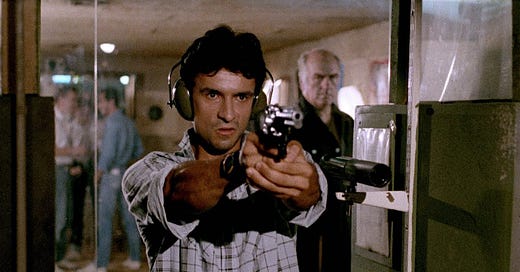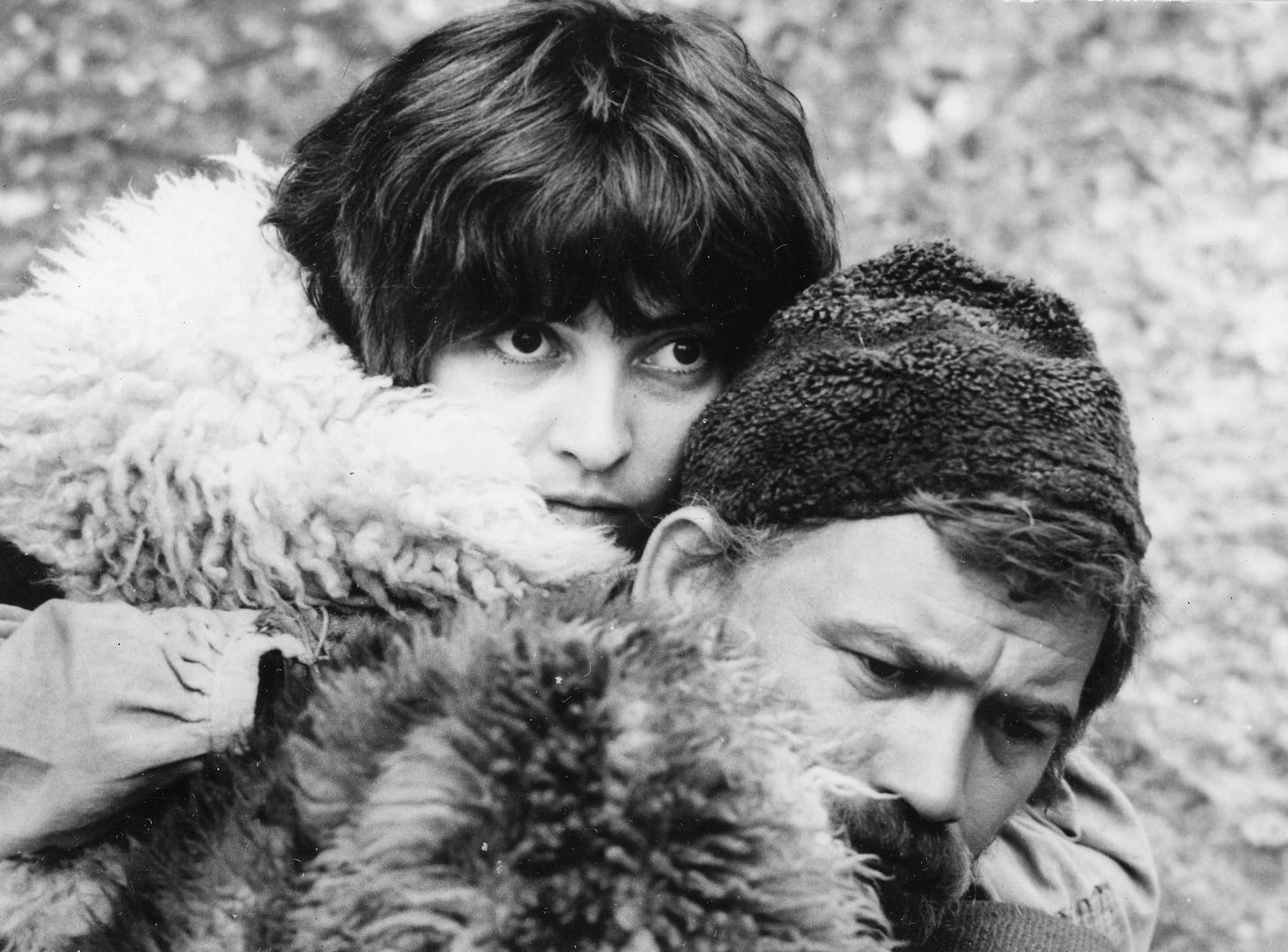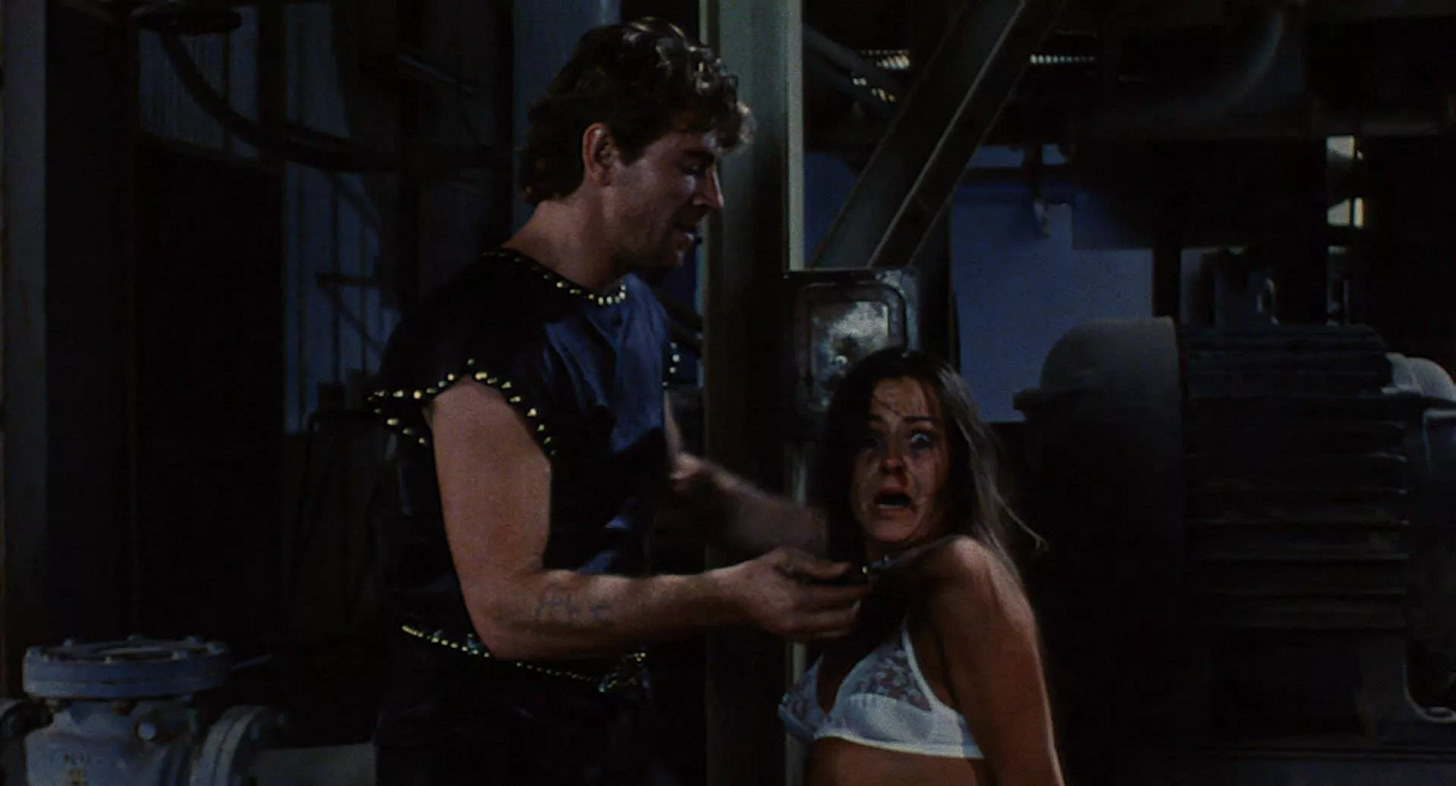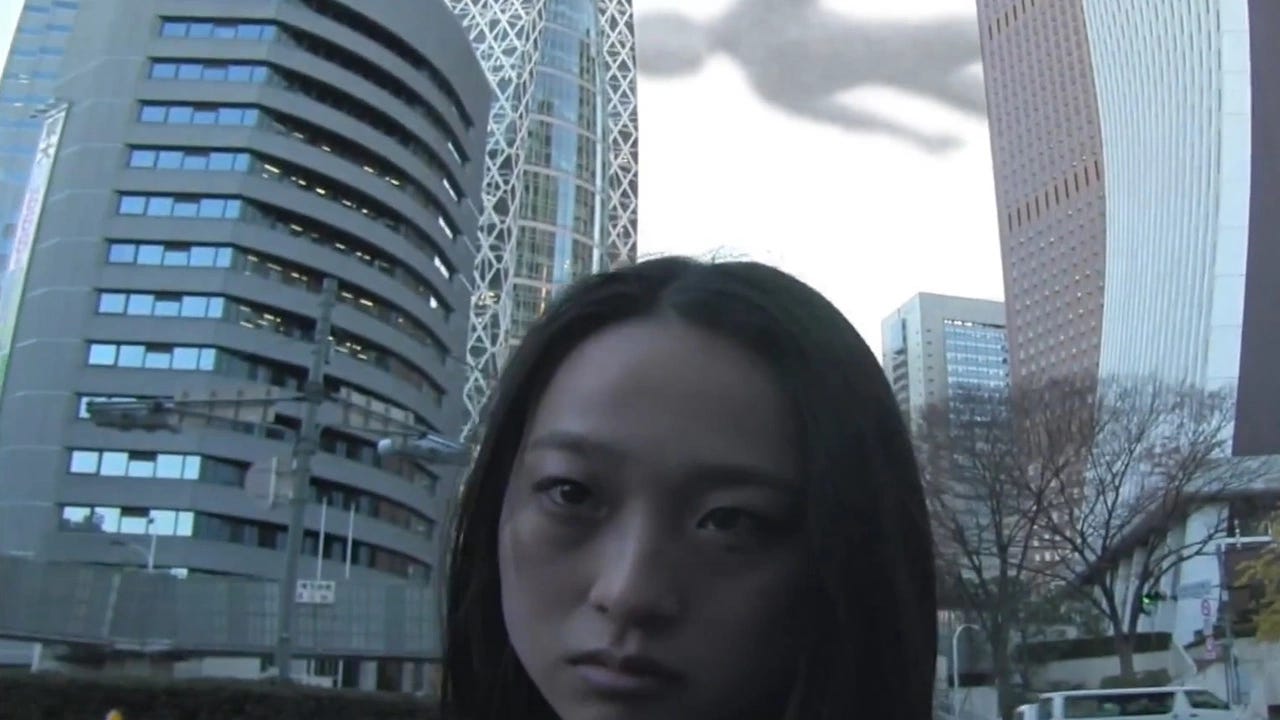Electric Trio Vol. 3
'The Goat Horn' (1972), 'Brigade of Death' (1985), and the 'Senritsu Kaiki File Kowasugi!' series (2012–2015)
Electric Trio is a column where I look at some of cinema history’s countless underseen, underappreciated, and largely forgotten works. The format (or gimmick, if you prefer) is simple: three films, three paragraphs each. Hopefully these posts will, on occasion, move a few of my readers to seek out a film they were previously unfamiliar with. If not, I hope that reading about them proves a worthwhile experience, at least.
The Goat Horn (1972)
A folk tune rises above howling winds, lulling us into Metodi Andonov’s mesmerizing 1972 rape-revenge fable The Goat Horn. Set in the 17th-century Bulgarian countryside, the film follows cattle herder Kara Ivan (Anton Gorchev) and his daughter Maria’s (Katya Paskaleva) quest to kill the four Ottoman feudal lords who raped and murdered Maria’s mother. Nine years after the harrowing event, Ivan has trained his daughter as a killer and has raised her as a son, cutting her hair short and beating her whenever she pulls her punches. It’s perhaps a stripped-back version of Ingmar Bergman’s The Virgin Spring (1960), more Stygian than heavenly, light-on-dialogue, and atmospherically suffocating as Andonov and cinematographer Dimo Kolarov lean into the gloomy poetry of the stark, unforgiving Bulgarian landscape, enshadowed and angular.
Andonov and screenwriter Nikolai Haitov explore the buried femininity of Maria’s character as she struggles against the merciless hunter that her father has tried to forge her into, hesitating to finish off the culprits who killed her mother and embarking on a love affair with a benevolent farmer who shows her the joy of subsisting off the land. Considering its bleak subject matter, there’s a surprising sweet streak underlying Maria’s character arc — there’s even a waterfall kiss, and with Paskaleva selling the moment with the grinning-and-brimming ecstasy of someone in a moment of profound transfiguration, it’s hard not to be affected by the sincerity of the image. Alas, even after their bloody quest has been fulfilled, Ivan refuses to relinquish control of his daughter, and Andonov’s final reels doom the world of The Goat Horn to a hellish cycle of violence and tragedy.
Andonov died only two years after the film’s release, leaving The Goat Horn without a large body of work to compare it to or situate it within. Still, a lot of these ninety minutes are spent not just with the violence but with the Edenic portrayal of nature as well — tranquil cattle-herding sequences, the joy of fresh fruit, the reaching clouds — moments that recall Akira Kurosawa’s samurai dozing off in flower beds or Terrence Malick’s farmers tilling fields, cocking their heads to see if the clouds still lay above them; images that stay with us just as much as the violence does. —Louis Norton
Brigade of Death (1985)
Given the kinds of films that make up a good deal of my cinematic diet, I end up throwing around adjectives like “sleazy,” “lurid,” and “grimy” quite a bit in my writing and it’s rare that any of these terms feel inadequate. French director Max Pécas’ 1985 renegade cop thriller Brigade of Death, however, is in a league of its own. Unpleasant in the extreme, there’s a stench coming off this thing that is best described as “foul,” its 96 minutes loaded with blood, guts, and a whole lot of full-frontal nudity. The film’s intense violence sometimes even pushes it into horror movie territory, a particularly brutal kill involving a severed hand and a cleaver to the face being one of the more memorable moments.
Brigade of Death’s plot is surprisingly dense and there are numerous characters to keep track of if one wishes to stay on top of the film’s many moving parts. The gist of the somewhat convoluted story is this: Gérard (Thierry de Carbonnières), a hard-ass Parisian inspector, is investigating a series of murders committed by a gang of bike-riding psychopaths, led by the demented Costa (Jean-Marc Maurel) — the film goes out of its way to paint him as a misogynistic repressed gay man — but the reckless, morally flexible cop is put on leave after his sister winds up dead. Of course, this isn’t a deterrent as much as it is the spark that ignites the vigilante flame as Gérard sets off to dole out some gruesome, old-fashioned street justice.
Why bother with a film as unabashedly ugly as this one? Well, why bother with anything? What of the ugliness in Shakespeare’s Titus Andronicus, for instance? There is a vision, for lack of a better word, to what Pécas attempts here, a vision that’s, admittedly, more cruel spectacle than Theater of Cruelty. A close contemporary analog would be S. Craig Zahler, whose grim genre exercises have led to accusations of all kinds of ideological impropriety. But while Zahler remains underrated as a filmmaker, Pécas has an acute awareness of what it is he’s creating here: this is sleaze designed to jolt you awake, to knock the sleep from your eyes in the harshest way possible. There’s value in that too. —Fred Barrett
Senritsu Kaiki File Kowasugi! (2012–2015)
As found footage horror calcified into shaky-cam predictability, the genre’s potential as an avenue for examining not just our oftentimes worrying commitment to “getting the shot” — think of the documentary filmmakers in Cannibal Holocaust (1980) who are eager to capture the now-infamous image of the impaled Yąnomamö girl, a girl, it is implied, they themselves murdered and whose death they staged for maximum dramatic effect — but also the way images, both “real” and “fake,” are disseminated through mass media, increasingly fell to the wayside and instead became a way for directors and producers to cut corners and lower audience expectations.
Horror maverick Kōji Shiraishi, however, has stayed the course. Though he has made his share of non-found footage films — not all of them good — it is the mockumentary format for which he is most famous, specifically for 2009’s Occult, as well as his most enduring creation, 2005’s Noroi: The Curse. Being the low-budget whizz that he is, Shiraishi cranked out a series of seven films between 2012 and 2015, entitled Senritsu Kaiki File Kowasugi!, all of which focused on the crew of a paranormal reality TV show and their exploits which bring them in contact with increasingly disturbing and dangerous ghosts, demons, and cryptids. While many creatures draw on or are taken directly from Japanese folklore, the series, as Shiraishi’s work so often does, culminates in Lovecraftian end-of-the-world stakes, something it shares in common with J-horror classics like Pulse (2001).
Though the found footage genre commonly thrives on a certain degree of verisimilitude, Shiraishi actually favors homespun effects work whose jarring strangeness plays all the more eerie against the mundane settings his characters frequently navigate — an interesting contradiction, considering both the series’ presentation as a reality show and its off-beat sense of humor. The wriggly, parasitic tentacles — a Shiraishi favorite — recall Stuart Gordon’s From Beyond (1986), while the escalating scale eventually leads the central trio into a parallel dimension whose design harnesses an anarchic energy similar to Nobuhiko Obayashi’s 1977 cult favorite House. It’s the kind of ingenious filmmaking that has to be seen to be believed. —Fred Barrett








